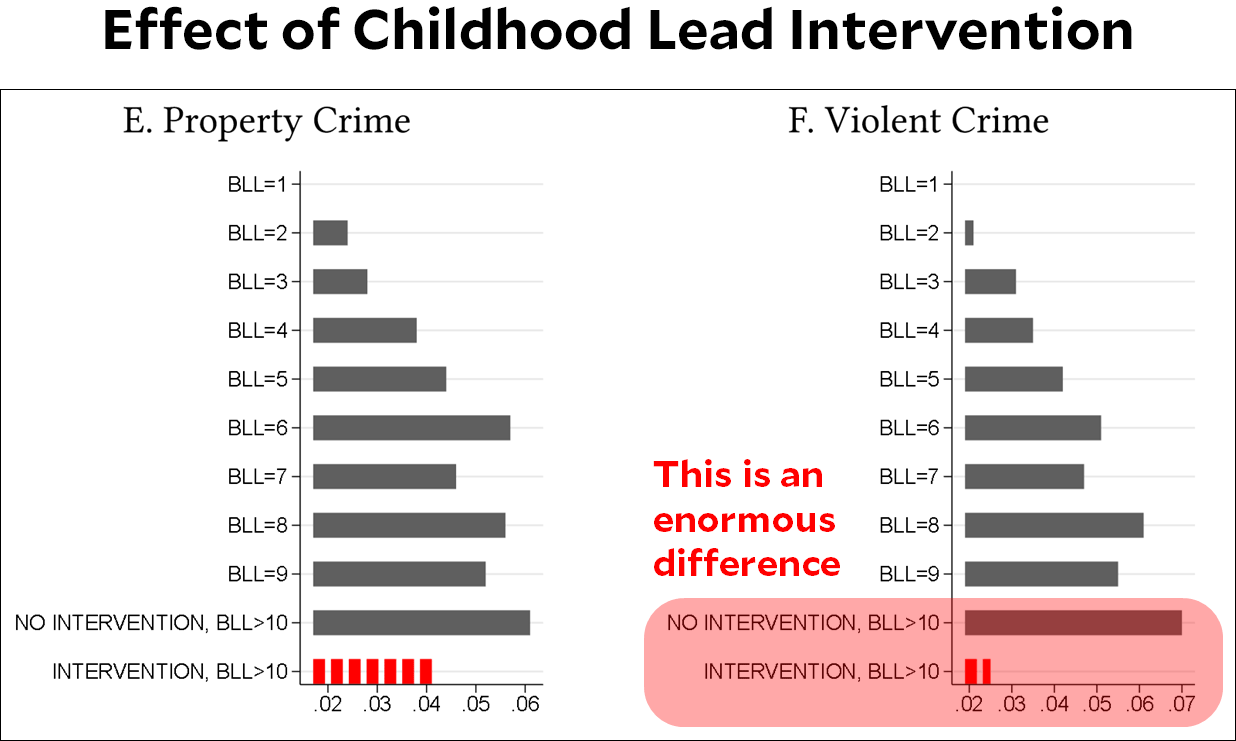Several readers have sent me a link to a Brookings report summarizing three recent studies on lead and crime. Thanks! Two of the studies I’ve already written about, here and here, but the third was new to me. It’s an especially incisive and well-done study.
The authors are Stephen Billings and Kevin Schnepel, who have made clever use of some data from North Carolina. Back in 90s, North Carolina tested children for blood lead levels, and if they were above the CDC guidelines they were tested again. If they were over the limit the second time, they received an intervention designed to lower their lead exposure.
At the time, the CDC limit was 10 micrograms per deciliter. This provided the authors with two groups of kids: those who tested above 10 on both the first and second round and those who tested above 10 on the first round but a little below on the second round. This kind of “discontinuity” study is quite powerful because it produces two groups that are very similar. Since the cutline is arbitrary, it’s very unlikely the groups a little above and a little below the line are different demographically or socially or racially. The only difference between them is that one group received the intervention and the second group didn’t. So what happened?
On average, the intervention reduced blood levels from 15 ug/dl to about 5 ug/dl. That’s a big drop. The non-intervention group, obviously, didn’t see any decline at all. Unsurprisingly, then, the intervention group did better than the control group on a variety of educational and behavioral outcomes. The authors also matched up the two groups with arrest records later in life, and by far the biggest effect of intervention was on violent crime:

Violent crime arrests go up along with blood lead levels, which should be no surprise at this point. But the final two bars in the chart are the most dramatic. The control and intervention groups, which were very similar to begin with, diverged substantially. The intervention group, even though it probably started out with slightly higher lead levels, was far, far less likely to be arrested for a violent crime in their teenage years compared to the control group. The statistical significance of the drop is extremely strong.
Because the two groups of kids were so similar, there was barely any need for controls. The authors did them anyway (gender, mother’s education, birth weight, etc.), and they had little effect on the final results.
I don’t really have any criticisms of this study aside from the fact that the sample sizes are fairly modest. If this kind of data is available elsewhere, I’d sure like to see some follow-ups.
UPDATE: I’ve changed the headline. It originally said this study “confirmed” the lead-crime hypothesis, but that goes too far. It’s a good study, but it’s still just one more study.













